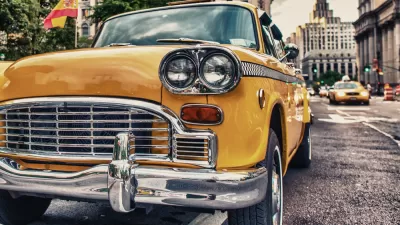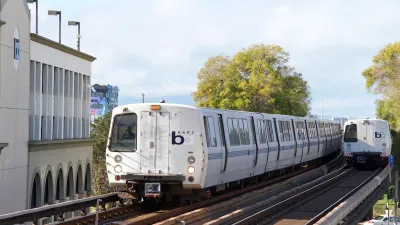Carl Nolte, the San Francisco Chronicle's historian, writes on the 150-year anniversary of the Market St. Railway that began operation as a 2-car steam train on July 4, 1860, and the evolution of rail on/under Market St including BART & Muni Metro.
It began as the first railway on the west coast - steam powered, "dirty, noisy and ultimately a financial flop, but it was the start of something big" in that it began the transition of the corridor into one of the nation's busiest transit routes as homes and businesses began to replace sand dunes.
"By 1867, the steam trains were replaced with a new invention: rail cars drawn by horses. By 1883, the horse-car lines were converted to cable cars, with a cable slot down the middle.
The cables ran on tight headways; by the turn of the 20th century, a cable car was at the Ferry Building at rush hour every 15 seconds, transit historians say."
BART heavy rail opened under Market and Mission Streets in 1973. In 1980, Muni Metro light rail opened in a subway above the BART subway on Market Street. In 1995, the historic "F" streetcar line opened on Market Street itself.
Nolte mixes the history of transit with that of the City, which originally was not centered on Market St. More can be learned at the Market St. Railway Museum which opens a free exhibit on July 15 highlighting the 1860 railway.
Thanks to Leonard Conly
FULL STORY: 150th anniversary of first Market St. rail line

Alabama: Trump Terminates Settlements for Black Communities Harmed By Raw Sewage
Trump deemed the landmark civil rights agreement “illegal DEI and environmental justice policy.”

Planetizen Federal Action Tracker
A weekly monitor of how Trump’s orders and actions are impacting planners and planning in America.

The 120 Year Old Tiny Home Villages That Sheltered San Francisco’s Earthquake Refugees
More than a century ago, San Francisco mobilized to house thousands of residents displaced by the 1906 earthquake. Could their strategy offer a model for the present?

In Both Crashes and Crime, Public Transportation is Far Safer than Driving
Contrary to popular assumptions, public transportation has far lower crash and crime rates than automobile travel. For safer communities, improve and encourage transit travel.

Report: Zoning Reforms Should Complement Nashville’s Ambitious Transit Plan
Without reform, restrictive zoning codes will limit the impact of the city’s planned transit expansion and could exclude some of the residents who depend on transit the most.

Judge Orders Release of Frozen IRA, IIJA Funding
The decision is a victory for environmental groups who charged that freezing funds for critical infrastructure and disaster response programs caused “real and irreparable harm” to communities.
Urban Design for Planners 1: Software Tools
This six-course series explores essential urban design concepts using open source software and equips planners with the tools they need to participate fully in the urban design process.
Planning for Universal Design
Learn the tools for implementing Universal Design in planning regulations.
Clanton & Associates, Inc.
Jessamine County Fiscal Court
Institute for Housing and Urban Development Studies (IHS)
City of Grandview
Harvard GSD Executive Education
Toledo-Lucas County Plan Commissions
Salt Lake City
NYU Wagner Graduate School of Public Service





























